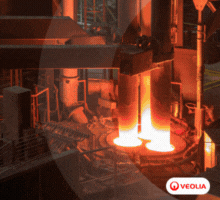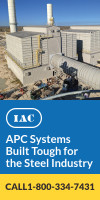worldsteel Comments on Iron Ore Contracts
04/02/2010 - The steel industry, through worldsteel, expresses renewed concern at the inevitable consequences of imposed pricing settlements and possible abuse of dominant positions by the main iron ore suppliers.
The steel industry, through worldsteel, expressed renewed concern at the inevitable consequences of imposed pricing settlements and possible abuse of dominant positions by the main iron ore suppliers.
“The benchmark system may have imperfections, but it has the merit of supporting long-term relationships between the steel industry and raw materials suppliers leading to beneficial medium-term investment decisions,” said Ian Christmas, worldsteel's Director General. “The implied move to spot pricing will be volatile and benefit neither side in the medium to long term.
“The ability of the mining companies to impose this change, which maximizes their short-run profits, comes from the uncompetitive market for seaborne iron ore,” Christmas continued. “Just three companies dominate this business, with the major Brazilian supplier having a virtual monopoly in the Atlantic basin and the two major Australian companies having a virtual monopoly in the Pacific basin. The two Australian companies now propose to merge their Western Australian mining operations.
“There is now an urgent need for the competition authorities around the world to examine the market for iron ore, and the market behavior of the three companies who dominate the business. They need to decide whether the uncompetitive nature of this business is in the public interest given that steel is used in virtually every aspect of the modern economy,” he concluded.
In 2008, Vale owned 32.8% of the seaborne iron ore market share, while Rio Tinto and BHP Billiton claimed 18.6 and 17.1%, respectively, according to Raw Materials Group quoted in UNCTAD Trust Fund on Iron Ore Information "Iron Ore Market 2008-2010", Geneva, June 2009.
The World Steel Association (worldsteel) is one of the largest and most dynamic industry associations in the world, representing approximately 180 steel producers (including 19 of the world's 20 largest steel companies), national and regional steel industry associations, and steel research institutes. worldsteel members produce around 85% of the world's steel.



.jpg?lang=en-US&ext=.jpg)
-(1).gif?width=220&height=200&mediaprotectionhash=8011a71ede637cd523c67b1296fc49e6151560fde821a46f29cc85998cc76615&ext=.gif)



